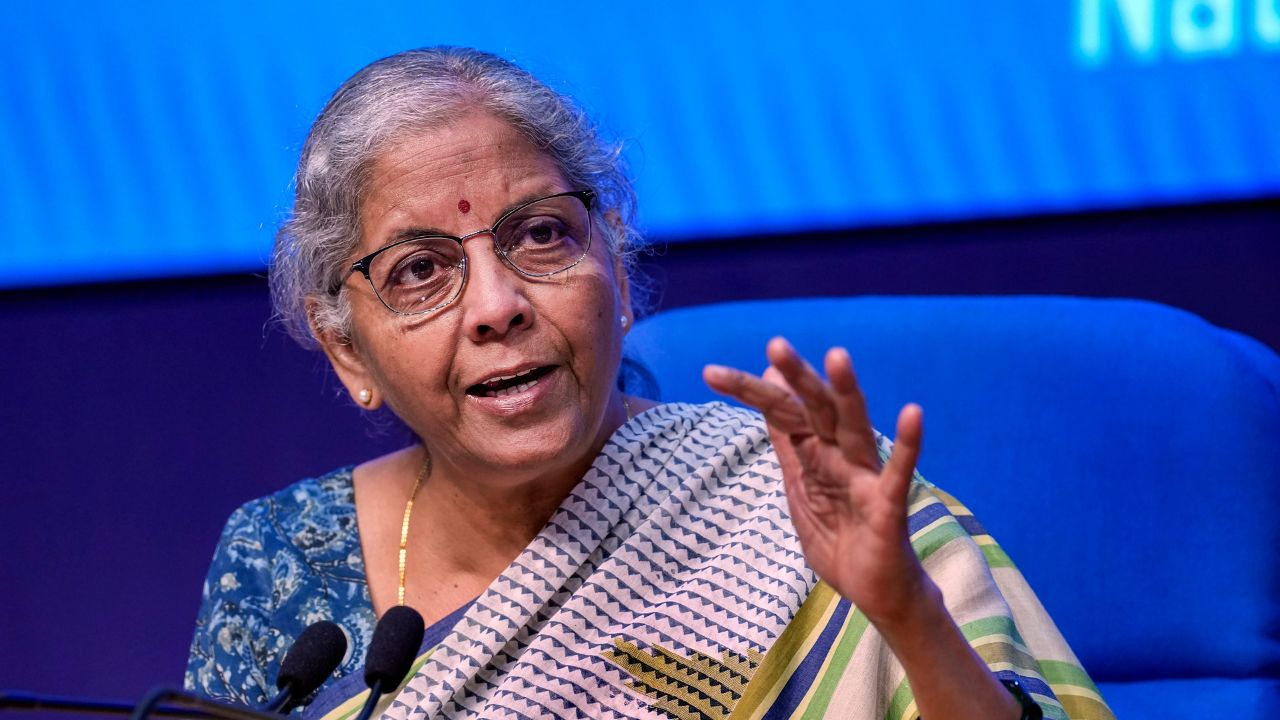
According to advanced GDP estimates, India is poised for 6.4% growth in FY25. However, this signals the need for significant government intervention to revitalise manufacturing, one of the sectors hardest hit in recent times.
India Inc. is pushing for higher capital expenditure (capex) allocation and incentives to drive consumption. At the same time, the Finance Minister must navigate the fiscal responsibility roadmap, aiming to bring India’s fiscal deficit below 4.5% by FY26.
To delve into the expectations from the budget, CNBC-TV18 engaged with key industry leaders, including Rajiv Memani, President-Designate of CII and Chairman of EY India; R Mukundan, Vice President of CII and MD & CEO of Tata Chemicals; Sunil Kant Munjal, Chairman of Hero Enterprise; and Chandrajit Banerjee, Director General of CII.
Below are the excerpts of the discussion.
Q: What do you believe the finance minister must do to seize the opportunities that present themselves, as far as the economy is concerned? I also want to understand from you what’s the pulse check of CII membership, telling you both in terms of demand as well as in terms of earnings, because in the previous quarter, what we did see are more earnings downgrades than earning upgrades. We’ve also seen growth slowing down. What’s the mood within CII in terms of growth and outlook?
Memani: I would say the mood is generally positive. Whilst companies were off to a slower start in some sectors, but by and large when people compare the first half of the year versus second half of the year, I think they are more bullish in terms of growth, in terms of capex spend and in terms of employment.
Having said that, I think people are anticipating that if the government spent increases in the budget, then I think that would give them even a greater fillip.
There was some slowdown around the election period, and I think that had a trickle-down effect, but overall, I would say people are more bullish in the second half as compared to the first half.
Q: Let’s talk about manufacturing specifically, because that’s the pocket where we’ve actually seen the most pain, which is shown up in the data that the government has just presented us with. What’s going on there? What are the specific pain points you believe that require to be addressed when we talk about manufacturing?
Mukundan: Manufacturing depends much on the consumption by various sectors. And if you really look at what are the positive tailwinds, which we are seeing, the tailwinds are coming basically from rural demand, which we think will pick up going forward. But if you look at the headwinds we are facing, it’s a basically the global uncertainty, the high real interest rate, and there are currency pressures. So our real understanding of continuing to boost manufacturing would be to focus on policy reforms and continue to further ensure the ease of doing business.
In the survey, which we do with our members, clearly they are planning to invest more, and really the bias towards continued investment remains positive. So, I think we need to keep the positive environment, positive momentum going forward. There are challenges, there are headwinds, but amongst all the countries, India, probably is better positioned, and we should continue to execute well on the ground by improving the ease of doing business as well as improving the competitiveness.
Q: You brought up the currency. So, let me understand what the sentiment is as far as the depreciation that we are seeing currently. Another record low for the rupee today. How are boardrooms, how are business leaders looking at what’s happening with the currency market today, and how are you factoring that into plans?
Mukundan: This depreciation is actually the strengthening of the dollar. It should not be seen in isolation with respect to Indian rupee itself. We, after all operate in a basket of currencies and any process by which we remain competitive viz-a-viz our key competitors, which is the Southeast Asian players as well as from China, I think it’s going to help us.
In our view, this calibrated approach to managing exchange rate, which RBI has done, is playing out exceedingly well. We are saying it should be calibrated. We are not saying whether it should be strong or weak. I think it’s more about calibration. And as we have seen this is certainly going to cushion the process and probably even support the move towards slightly reducing the domestic interest rates. So, I think it’s going to play positively for the economy. Of course, there are going to be pressures in the external sector, coming in mainly from the high level of crude imports and other imports. But I think this will also support the exports in multiple ways. So, in a way it should be seen as a positive calibrated move as far as Indian economy is concerned.
Q: From a consumption point of view, and that’s been one of the concerns playing out over the last few months. What’s your own sense? And do you believe the budget can use some levers to change the mood there?
Munjal: I think it certainly can, and actually it needs to, because it has a multiplier effect. When there’s not enough consumption, then there is no capex by companies to enhance their own capacities, and that has a continuous negative impact.
The government has been spending on infrastructure, and we’ve said repeatedly, that’s a good thing, and must not only continue, it must enhance what it’s been doing, but build both, build physical infrastructure and build digital infrastructure at the same time.
Also the monies that come in from divestment, I think, can be used very intelligently, first, to create a Sovereign Wealth Fund, which will add a multiplier to overall economy for the country, also retire some of the debt that we currently have, and enhance the infrastructure spend, not only in terms of areas covered, but also in terms of volume of those areas covered.
We’ve also spoken about coupons, or vouchers, which can be given for consumption, especially to the lower income earners, and can direct it specifically in areas which are good for them and good for the economy. I think that’s one way in which you could enhance consumption and direct it for the social good as well.
Q: CII along with other industry chambers has had its pre-budget meetings with the finance minister. You’ve sent a long list of demands and your wish list to the finance minister as well. But if I were to ask you to prioritise out of everything that has gone in from industry to the government, what do you believe the government should focus on off that wish list?
Banerjee: I would think at the end of the budget speech, we should be able to say that this budget has focused on growth. I think growth is going to be very, very critical. Looking at growth and managing the fiscal, I would say don’t allow it to go below 4.5%. But fiscal deficit targeting viz-a-viz debt targeting, I would think, let’s focus on debt. Look at the total debt of the government, instead of the fiscal deficit per se. The advantage of debt targeting is that it will lead to higher sovereign rating which will bring an investment, which will bring in FDI, and real interest rates would also come down.
Second is consumption demand. So, seeing how consumption demand is boosted through better income tax cuts and let’s say for instance, cut even on the excise on fuel and stuff like that.
The third, I would think is capex. So, a greater focus – 25% over last year would be important. It’s important for us to keep doing that year on year.
And my fourth point would be ease of doing business, or ease of living, in terms of ease of paying taxes, making the form easier, to decriminalisation, all of that in one basket.
And my fifth would be of course employment, generating sectors, be it manufacturing, be it services. My last point would be real focus on the states. Today, the growth story of India will really come from the states. Last time in the budget, there was some mention about state but we need to see this push on some of the states being able to pick up. I think these are six areas which I would really look out for.
Watch accompanying video for entire discussion.

